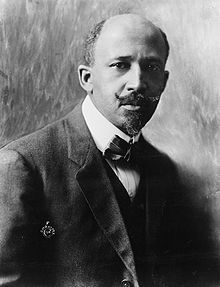CLASS DIVIDE AMONG
BLACK AMERICANS
By: Daniel Peterson
The economic difference between the African-American communities is among the most crucial factors in the rise of Black Lives Matter, led by a new generation of college students and graduates.
In 1903, W. E. B. Du Bois, who was the leading scholar of the first half of the 20th century, defined the urgency of black social responsibility in his popular essay “The Talented Tenth” — ten being the percentage of the African-American demographic required to lead the race into an integrated, equal America. In that essay, Du Bois called for “intelligent leadership” controlled by “college-trained men” dedicated to a “thorough understanding of the mass of Negroes and their problems” for the aim of solving these problems, still so deeply established a half-century after the annulling of slavery.
Forty-five years later, Du Bois would lament, this call that had been largely ignored. He worried a lot about the increasing class divide in Black America and how the impacts of that split might affect the role of “lifting as we climb,” the motto of the National Association of Colored Women’s Clubs, describing the burden and privilege of the middle class to facilitate black empowerment.
Indeed, by 1948 Du Bois felt that the new black middle class had misremembered this noble calling. There had been, even during his college days, troublesome warning symbols: “sharp young people, who received the education is given very cheaply at Fisk University, with the distinct and single-minded idea, of seeing how much they could make out of it for themselves, and nobody else.”
Du Bois knew that any black individual at that particular time had to try a lot to overcome the barriers just to lift him/herself and family. But that was not all: Successful black individuals, he said, must recognize that their role in life was a matter of opportunity. “If such opportunity were extended and broadened, a thousand times as many Negroes could join the ranks of the educated and able, instead of sinking into poverty, disease, and crime.”
Du Bois also understood that Black America had not yet consisted of one economic or social class. Even before the emergency of the Civil War, about 11% of Black America were free, some born into families who had been free for many generations. And in 1899, when Du Bois released his seminal sociological study, “The Philadelphia Negro,” he was already noticing that these two classes had segregated into four: the middle class and above, the working people “fair to comfortable”, the poor and, contemporarily referred to as the “vicious and criminal classes.”
Du Bois would probably be surprised to witness how these classes have fared, more so, since the death of the Rev. Dr. Martin Luther King Jr. in 1968, just as new positive action programs were starting to increase the ranks of black scholars on white campuses drastically and thus to improve the class structure of Black-America.


